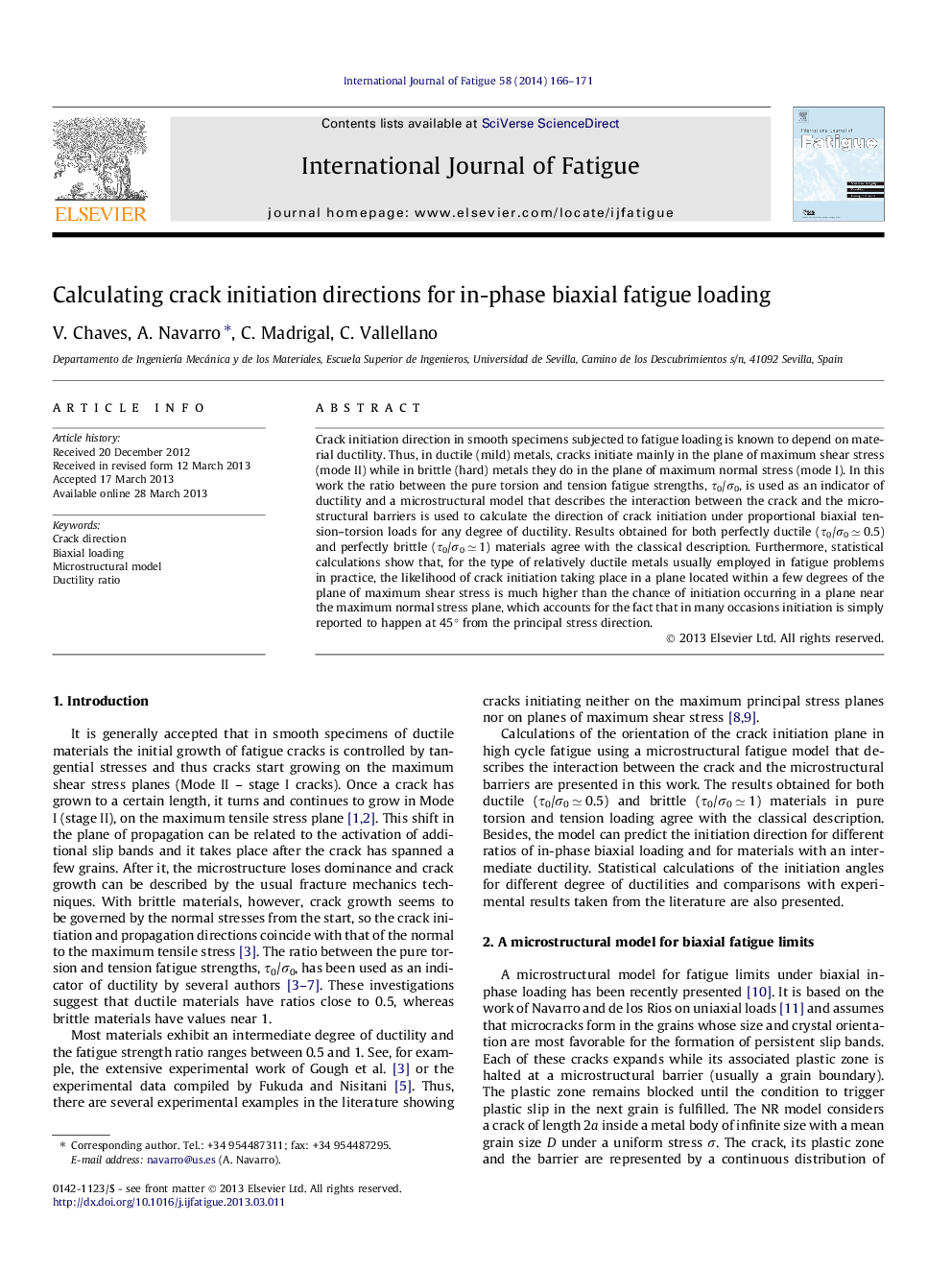| کد مقاله | کد نشریه | سال انتشار | مقاله انگلیسی | نسخه تمام متن |
|---|---|---|---|---|
| 780788 | 1463774 | 2014 | 6 صفحه PDF | دانلود رایگان |
• Short crack model used to calculate initiation planes for in-phase tension–torsion.
• Takes into account the ductility of the material.
• Ductility described as ratio of fatigue strengths in torsion and tension.
• Shows high likelihood of initiation planes being near maximum shear stress planes.
Crack initiation direction in smooth specimens subjected to fatigue loading is known to depend on material ductility. Thus, in ductile (mild) metals, cracks initiate mainly in the plane of maximum shear stress (mode II) while in brittle (hard) metals they do in the plane of maximum normal stress (mode I). In this work the ratio between the pure torsion and tension fatigue strengths, τ0/σ0, is used as an indicator of ductility and a microstructural model that describes the interaction between the crack and the microstructural barriers is used to calculate the direction of crack initiation under proportional biaxial tension–torsion loads for any degree of ductility. Results obtained for both perfectly ductile (τ0/σ0 ≃ 0.5) and perfectly brittle (τ0/σ0 ≃ 1) materials agree with the classical description. Furthermore, statistical calculations show that, for the type of relatively ductile metals usually employed in fatigue problems in practice, the likelihood of crack initiation taking place in a plane located within a few degrees of the plane of maximum shear stress is much higher than the chance of initiation occurring in a plane near the maximum normal stress plane, which accounts for the fact that in many occasions initiation is simply reported to happen at 45° from the principal stress direction.
Journal: International Journal of Fatigue - Volume 58, January 2014, Pages 166–171
